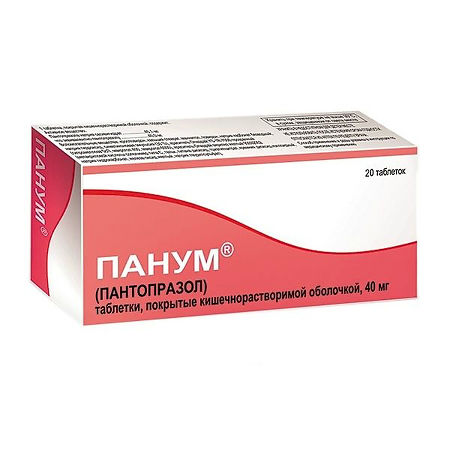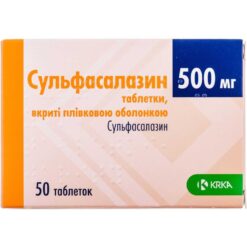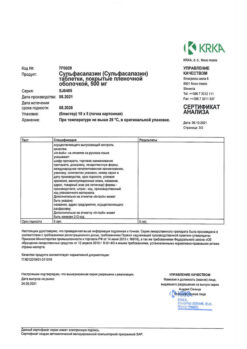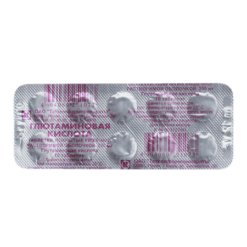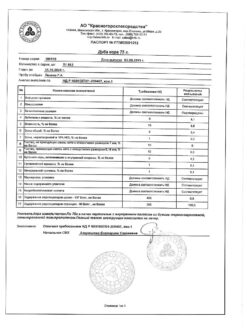No products in the cart.
Panum, tablets 40 mg 20 pcs
€1.00
Out of stock
(E-mail when Stock is available)
EAN: 8901086160454
SKU: 217226
Categories: Medicine, Stomach, intestines, liver, Ulcer and gastritis
Description
Pharmacodynamics
Proton pump inhibitor (H+ K+ ATPase). Blocks the final stage of hydrochloric acid secretion regardless of the nature of the irritant.
Pantoprazole is a substituted benzimidazole that inhibits hydrochloric acid secretion in the stomach by specific blockade of the proton pumps of the parietal cells.
Pantoprazole is transformed into its active form in an acidic environment in the parietal cells, where it inhibits the activity of the enzyme H+ K+ ATPase, i.e. it blocks the final stage of hydrochloric acid formation in the stomach. The suppression of activity is dose-dependent and, as a result, both basal and stimulated acid secretion is reduced.
Pantoprazole treatment, as with other proton pump inhibitors and H2-receptor blockers, reduces gastric acidity and thereby increases gastrin levels in proportion to the decrease in acidity. The increase in gastrin levels is reversible.
Because pantoprazole binds the enzyme distally to the cell receptor, it can inhibit hydrochloric acid secretion independent of stimulation by other substances (acetylcholine, histamine, gastrin).
Chromogranin A (CgA) is also increased in serum due to decreased hydrochloric acid secretion. Increased levels of CgA can distort the results of diagnostic tests to detect neuroendocrine tumors.
Antisecretory activity. After first oral administration of 20 mg pantoprazole, gastric juice secretion is reduced by 24% after 2.5-3.5 hours and by 26% after 24.5-25.5 hours. After oral administration of pantoprazole once daily for 7 days, its antisecretory activity, measured 2.5-3.5 h after administration, increases to 56% and after 24.5-25.5 h to 50%.
In duodenal ulcer associated with Helicobacter pylori, decreased gastric secretion increases the sensitivity of microorganisms to antibiotics. Does not affect the motility of the gastrointestinal tract. The secretory activity is normalized in 3-4 days after the end of intake.
In comparison with other proton pump inhibitors, pantoprazole has greater chemical stability at neutral pH, and less potential for interaction with the cytochrome P450-dependent liver oxidase system. Therefore, no clinically significant interactions have been observed between pantoprazole and many other drugs.
Pharmacokinetics
Pantoprazole is rapidly absorbed after oral administration. Maximum plasma concentration (Cmax) with oral administration is reached after the first dose of 20 mg. On average, about 2-2.5 hours after the administration, the maximum serum concentration is reached, about 1.0-1.5 mcg/ml and Cmax and remains constant after multiple uses of this drug.
The pharmacokinetics of pantoprazole are the same after single and multiple administration. In the dose range of 10-80 mg, the pharmacokinetics of pantoprazole in plasma remains linear with both oral and intravenous administration.
The absolute bioavailability of pantoprazole tablets is about 77%. Concomitant ingestion has no effect on the area under the “concentration-time curve” (AUC), on the maximum serum concentration and, therefore, on the bioavailability.
In co-administration with food the time of onset of action of the drug may vary. Binding of pantoprazole with blood plasma proteins is 98%. The volume of distribution is 0.15 l/kg.
Metabolized mainly in the liver. The main metabolic pathway is demethylation by CYP2C19 with subsequent sulfate conjugation. Other metabolic pathways include oxidation with CYP3A4.
The final elimination half-life is approximately 1 hour and clearance is approximately 0.1 L/h/kg. Due to the specific binding of pantoprazole to the proton pumps of the parietal cells, the elimination half-life does not correlate with a much longer duration of action (inhibition of acid secretion).
The main route of excretion is through the kidneys (about 80%) as pantoprazole metabolites, the rest is excreted with feces.
The main metabolite in blood plasma and urine is desmethylpantoprazole, conjugating with sulfate. The elimination half-life of the main metabolite is about 1.5 h, which is slightly longer than that of pantoprazole.
When using pantoprazole in patients with limited renal function (including patients on hemodialysis), no dose reduction is required. As in healthy volunteers, the half-life of pantoprazole is short. Only a very small portion of the drug is dialyzed. Despite a moderately long elimination half-life of the main metabolite (2-3 h), its excretion is quite fast and therefore accumulation does not occur.
In patients with cirrhosis (classes A and B according to Child-Pugh classification) the half-life is increased to 3-6 h, the AUC values increase 3-5 times, the maximum concentration in serum increases slightly, only 1.5 times in comparison with that in healthy volunteers when using pantoprazole in dosage 20 mg.
The slight increase in AUC and Cmax in the elderly compared to those in younger subjects is not clinically significant.
Indications
Indications
Active ingredient
Active ingredient
Composition
Composition
Active ingredients:
Pantoprazole sodium sesquihydrate 45.1 mg, which corresponds to the content of pantoprazole 40 mg;
Auxiliary substances:
crospovidone,
calcium stearate,
mannitol,
povidone,
sodium carbonate anhydrous,
sodium hydroxide,
simethicone emulsion (30%),
Opadry YS-1R-7006 transparent dye (hypromellose 5cP, macroGol 400, macroGol 6000), Opadry acrylics yellow dye 93O92052 (methacrylic acid copolymer (type C), talc, titanium dioxide, triethyl citrate, colloidal silicon dioxide, sodium hydrocarbonate, iron oxide yellow, sodium lauryl sulfate).
How to take, the dosage
How to take, the dosage
Interaction
Interaction
The concomitant use of other proton pump inhibitors or H2-histamine receptor blockers is not recommended without medical advice.
The concomitant use of Panum® may reduce absorption of drugs whose bioavailability is dependent on gastric pH (e.g., ketoconazole, itraconazole, posaconazole and other drugs such as erlotinib).
The co-administration of pantoprazole and HIV protease inhibitors whose absorption is dependent on gastric acidity (pH), such as atazanavir, nelfinavir, significantly reduces their bioavailability.
No clinically significant interactions were found during drug interaction studies when pantoprazole was used in the following:
At the same time, it should be noted that there are known cases of increased INR and prothrombin time in patients treated with proton pump inhibitors together with warfarin or with fenprocoumon. Increased INR and prothrombin time may lead to life-threatening pathological bleeding. Therefore, these patients should be monitored for timely detection of increased INR and prothrombin time.
It is also noted that there is no clinically significant drug interaction with caffeine, ethanol, theophylline.
There are reports of elevated blood levels of methotrexate in some patients when coadministered in high doses (e.g., 300 mg) with proton pump inhibitors. Therefore, when using high doses of methotrexate, such as in cancer or psoriasis, it may be necessary to consider temporarily withdrawing pantoprazole.
Contraindications
Contraindications
Side effects
Side effects
Overdose
Overdose
Pregnancy use
Pregnancy use
Similarities
Similarities
Additional information
| Shelf life | 3 years |
|---|---|
| Conditions of storage | In a dry, light-protected place at a temperature not exceeding 30 °C |
| Manufacturer | Unique Pharmaceutical Laboratories, India |
| Medication form | enteric soluble tablets |
| Brand | Unique Pharmaceutical Laboratories |
Related products
Buy Panum, tablets 40 mg 20 pcs with delivery to USA, UK, Europe and over 120 other countries.

